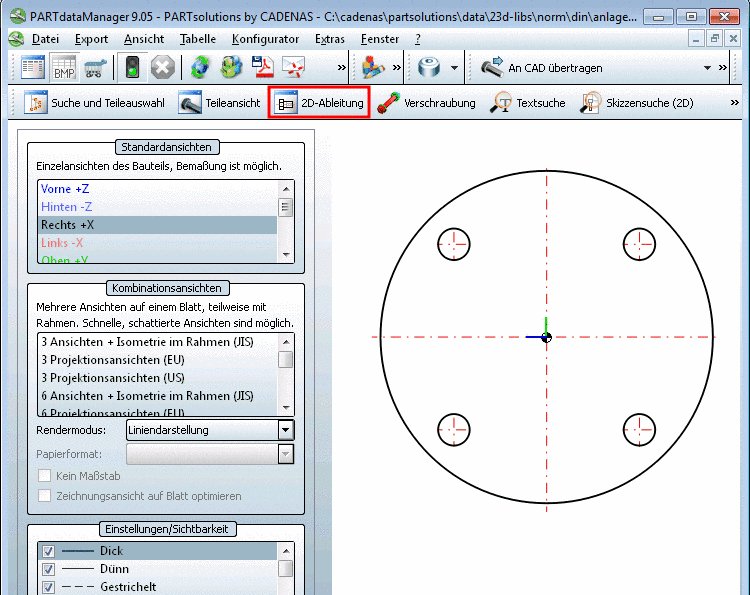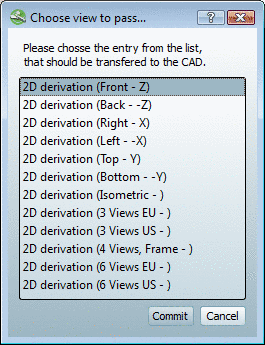Manual
Login
Our 3D CAD supplier models have been moved to 3Dfindit.com, the new visual search engine for 3D CAD, CAE & BIM models.
You can log in there with your existing account of this site.
The content remains free of charge.

Top Links
Manual
The following describes how you can insert 2D single parts from the Standard and supplier parts library into your CAD system.
|
-
In the Part selection choose the desired part.[4]
-
In the Part view determine the desired characteristics.
-
To do so, you have the following options:
-
Click on the button 2D derivation
 .
.Select a view.[5]
-
Alternatively you can also skip the opening of the 2D view and click on Transfer to CAD
 directly.
directly.The following views are available in the Choose view to pass... window:
-
Click on the button
 (option a) or confirm with (option b)[6]-> The view changes back to the CAD system.
(option a) or confirm with (option b)[6]-> The view changes back to the CAD system.Insert the part and/or assembly with the placement method of your CAD system.
[4] A more detailed description of PARTdataManager can be found under Section 3.1, “ PARTdataManager ”.
[5] More detailed information about the 2D view can be found under Section 3.1.1, “Basic functions ”.
[6] You can also export the part via "Export in file". More detailed information under Section 3.1.2.1.2, “ Export to CAD systems without PARTsolutions interface - Export in file ”.





